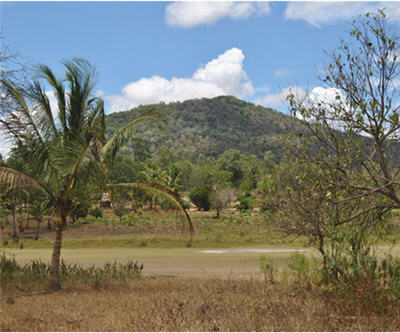
Pacific Wildcat Resources Corp. (TSX VENTURE:PAW) (“PAW” or the “Company”) is pleased to announce the initial NI 43-101 compliant independent Niobium mineral resource estimate report for the Mrima Hill Niobium and Rare Earth Project in Kenya.
The mineral resource estimate was prepared by ExplorMine Consultants (“ExplorMine”) of Johannesburg, South Africa. The table below shows the results of the mineral resource estimate as follows:
| Mineral Resource | Tonnes | Average | Nb2O5 Pounds |
| Category | (Millions) | Nb2O5(%) | (millions) |
| Measured | – | – | – |
| Indicated | – | – | – |
| Inferred | 105.3 | 0.65 | 1,519 |
The Niobium mineral resource estimate is from surface down to a maximum depth of 30 metres with 83% of the mineral resource tonnes being found in the top 20 metres. ExplorMine are of the view that with additional surface survey information a significant portion of the inferred classification may be able to be reclassified into the Indicated category.
As can be seen from the mineral resource estimate grade tonnage curve below, a significant portion of the mineral resource is high grade with 12.0 million tonnes of mineralisation having a grade of 1.21% Nb2O5 at a 1.00% Nb2O5 cut-off grade.
To view Figures 1 and 2 please click on the following link: http://media3.marketwire.com/docs/0707PAW.pdf
PAW’s President Mr. Darren Townsend commented, “We are very pleased with this initial Niobium mineral resource estimate given how shallow the mineral resource is as well as the high grade nature of the deposit. It shows the large size potential of the deposit and I am confident the 1,500 metres deeper diamond drilling program we are currently undertaking will continue to show the depth potential of the deposit.”
Mineral Resource Estimate Methodology
The mineral resource estimation methodology was Ordinary Kriging interpolation of blocks with a block size of 100m (x) x 100m (y) x 2.5 m (z). A well-defined grade model was obtained by constraining the upper limit of the Nb2O5 95% confidence limit spread to 30%. The horizontal extent of the Resource was constrained by historical geological mapping by Anglo American.
The mineral resource estimate is based on:
The Niobium Market
Niobium is an advanced metal used in a variety of uses including high strength, low alloy steels. “Niobium represents a small percentage of the raw material cost of steel making, but adds significant value by improving strength, durability, weight and flexibility. Substitutes, such as ferrovanadium have inferior physical characteristics and comparatively higher prices and generally lower added value, mitigating the risk of substitution” (IAMGOLD 4 May 2011. Niobium consumption has increased at approximately double the rate of steel over the past 10 years and the current FeNb price is approx. US $ 46/kg Nb (source Metal Pages – Ferro Niobium 65% – 30/6/11).
About the Mrima Hill Project
The Mrima Hill Project is located in the southeast of Kenya and is 70 kilometres south of Mombasa, the largest port in East Africa. The ground area covered by the Mrima Hill licences is 1,180 sq. km.
Mrima Hill also has significant Rare Earth Oxide (“REO“) mineralisation located coincidently and in close proximity to the Niobium deposit at Mrima Hill. Binge FW (1955) reports a total of 32 million tonnes of mineralisation at 3.1% REO in the surface weathered profile down to approximately 8m depth (for further details refer to press release dated 23rd July 2010 and titled “PAW enters into conditional purchase agreement with the right to acquire the majority of a large scale Niobium/Rare Earth metal project“).
Note that the potential quantities and grades of the above REO estimates are conceptual in nature, and there is insufficient exploration to date to define a mineral resource and therefore it is uncertain if further exploration will result in the target being delineated as a mineral resource.
Read the full news release here. Image of Mrima Hill is from Pacific Wildcat Resources.
Comments
Luciana
Are you guys doing open cast mining or tunneling?